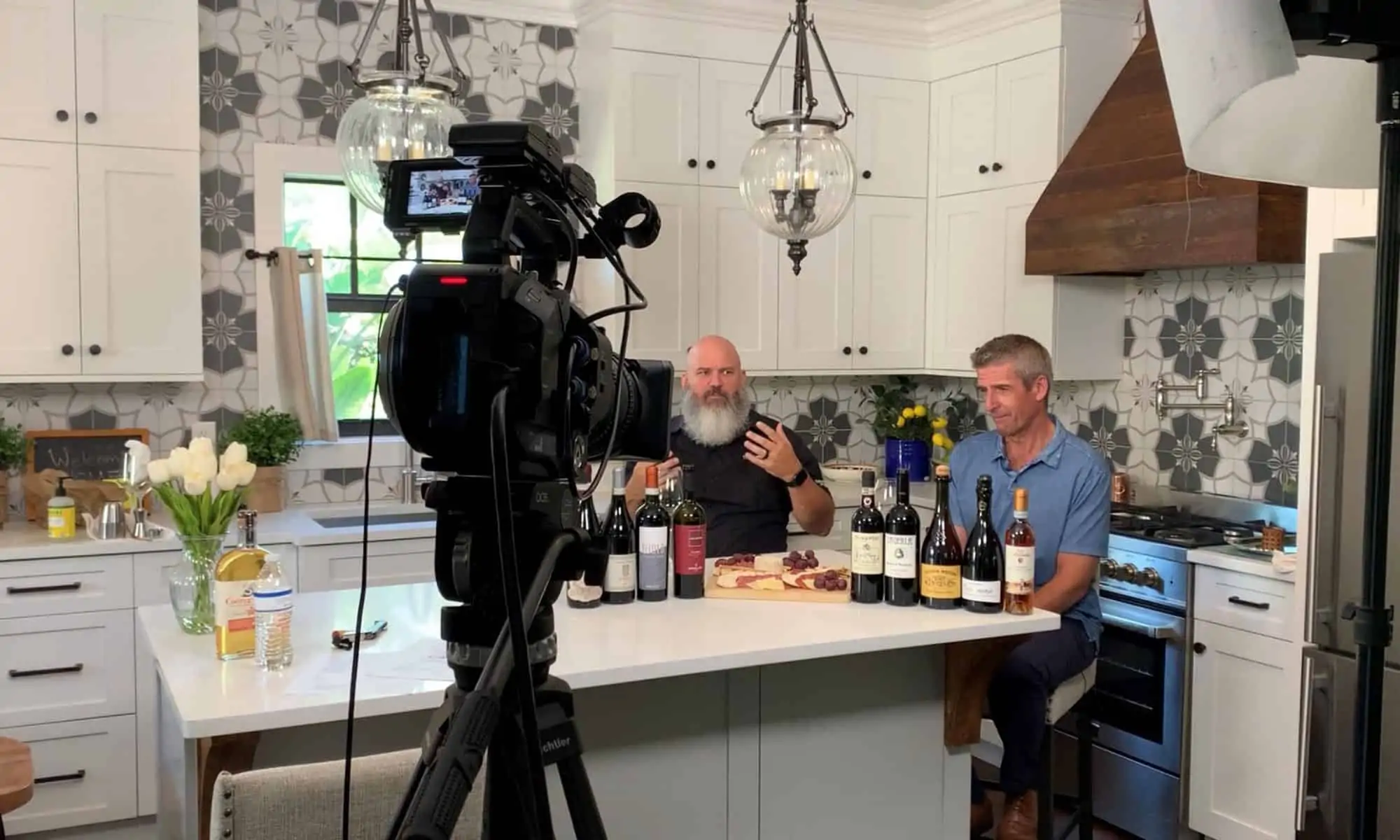How Is Video Changing In 2021?
Whether you’re a large, multi-national company or a small business, video is increasingly more important in marketing the business. How to use video is becoming an increasingly important area to explore and in 2020, we saw a huge increase in the use of video and that appears to be continuing in 2021.
Trends show that video is increasingly more important to share a corporate message than ever before. The question remains how has 2020 changed the way video is used? How will video be used in the coming years? In this post, we share some of the interesting trends we’re seeing in the corporate video production and corporate livestream video world and address the question:
How to use video and video marketing for your business in 2021?
The primary way video has been used in the years leading up to 2020 was to create a branded message with the purpose of converting a viewer into a fan and eventually into a customer. The road to conversion has shifted slightly. How it is being used and the methods that video has been incorporated shifted greatly during 2020. Many organizations shifted to creating videos that showed the viewer a behind the scenes, more intimate look at their operation. The goal was to show who was behind the scenes and how their people make up the business. The feel was directed to a “Our people are our business” mentality.
How To Use Video and What is Video Marketing and How Does It Work?
Video marketing is simply the process of creating a corporate video for the purpose of highlighting what a business does, how they help their customers, or telling their story in a compelling way. The ultimate goal of any video marketing strategy is to convert viewers to customers or clients. This conversion should be measured and converted to a Return On Investment (ROI).
If the video is compelling, more viewers convert; if a video is less compelling, less will convert. This means it is extremely important to enter the video production process with a purpose and goal. The purpose might be to share the story or show the human side of a corporation (think Publix Commercials) and the ROI might be 1 customer created for every 1,000 views (where we might assume part of the ROI is to retain or reinforce a message to existing customers).
Video Marketing usually works in the form of a commercial placed in front of the viewer (via television, online media consumption, or mobile media consumption). For example, a short video ad might be placed in front of another video that the viewer wishes to watch but must first watch the advertisement to view the video they want to see. This can be effective for forced marketing.
Another form of Video Marketing is the creation of a consistent stream of informational videos sent out to YouTube. For example, our Creative Director, Jenn Jager, created a YouTube channel several years ago to demonstrate her knowledge about video production. Since its creation, several clients have found Plum Productions because of her videos about various video production related topics. This is a form of Video Marketing that is more passive and less forced.
People search a question about a topic, find her video on Google or YouTube, watch her video, and then later reach out because they have questions and want to know if she can help. This is a much better method of gaining clients over time than forced advertisements; although, there is certainly a place for paid advertisements. For example, in her videos, she may have a paid advertiser run their ad prior to her video or she may promote a product for a company based on a paid agreement (usually noted in the video).
How Effective is Video Marketing For Business?
Let’s start with the assumption that one is placing the video in the right place at the right time to be in front of the right audience. That is the critical first step and why it is particularly important to have a purpose and goal prior to creating any video.
Now think about when you shop online for a product or service. Do you read any reviews? Most likely you do. Do you do any other research like Google the product name? You probably do. Do you watch videos related to the product or service? Most likely you do. That seems to align with the research.
According to Smart Insights, more and more marketers (those who place ads) are finding that video are a critical component of their marketing strategy. They find that the ROI on video has been steadily increasing over the years and it continues to do so this year.
One shift that Smart Insights and the marketers they’ve surveyed found that there has been a shift in where videos are placed and get a return on their investment. They are not only seeing a greater watch time (increasing by approximately 19%), but also seeing a shift from television advertising to online video marketing. The spend has grown faster in the online video segment than the television segment, which is significant and worthwhile to know.
What Types of Video Should Be Used When Marketing?
At Plum Productions, we’ve seen a shift in the past year to more online events and a growth in creating video for websites to improve search engine optimization. Here are the types of videos being used to market business right now:
- About Us Videos
- Testimonial Videos
- Video Reviews
- Corporate Messaging Videos (internal and external)
- Demonstration/Product Videos
- Real Estate / Construction Videos
- Sales Tool Videos
- Live / Livestream Videos
- Virtual Event Videos
Here is a little more information about each one:
About Us Video
In this type of video, the company is simply trying to share with the viewer who they are, what they do and why a viewer should do business with them. Think about the traditional, “We’re ABC Company and we do X” style. This is something Plum Productions does a lot of and can help you create a script or branded message to better capture potential customers.
Testimonial Videos
If your company has a client base that can be asked to give a positive statement on camera, this is a great tool to help any company convert a viewer to a sale. Most people want to know they’re not the only ones who are buying from you…they want to know that others have tried you and you are legit. This should be used on any sales page that asks for the sale (asks for a payment). It will help conversion over time and help close the deal.
Video Reviews
This type of video is typically used with products. Most times this is a video that is created by someone who purchased a product and wishes to unbox and review the product for their viewers. This can be a source of income for product companies if they request a YouTube Influencer to review their product on their channel. Be prepared to offer an affiliate link or payment for their efforts and time. If their channel is the right channel for your audience, it should be worth the investment.
Corporate Messaging Videos (Internal & External)
Recently we did a video for a national company to review how they did in the first quarter of 2021. This video was shared internally with their team around the county to give everyone a sense of how they did and give the team a goal/direction to strive toward. This is a great way to communicate outward to the team to motivate them to continue to improve. This type of video can also be used to communicate outwardly to vendors and even customers. This video might include information to help viewers understand how well the company is doing and how they are grateful for their customers. By doing this, it reinforces brand loyalty with both vendors and/or customers.
How To Use Video: Demonstration / Product Videos
This type of video is for companies that sell products and want to show possible uses or the versatility of the product. For example, in this video from Epoca.
Or this video from the Tator Gator, both show how the product can or is used. This type of video helps the viewer understand what the product does but also puts the viewer into the situation to better clarify to the viewer if they should buy or not. If it’s not for them, they should be able to see that in the video to prevent product returns.
How To Use Video: Real Estate / Construction Videos
This area has grown dramatically in the past few years. Realtors are starting to create short videos to show a home they have listed to improve the possibility of a sale. The other area video is being used is in the construction market. Here, Origin Construction shows what type of work they do, how they work, and who is their client.
How To Use Vide: Sales Tool Videos
Videos that are used as sales tools are videos that walk the viewer through steps to get to a purchase. It might be a short social media that leads the viewer to a slightly longer video on a landing page followed by an even longer video that makes the purchase easier for the potential customer. These videos can also be frequently asked questions (FAQs) before calling in to speak to someone in the business before making a purchase. The other way a sales tool video is used is during a sales meeting, the salesperson uses a video to explain or show their services. It becomes a tool in the process of making a sale. If the focus is to lead the viewer down the path to a purchase, it most likely is a sales tool video.
How To Use Video: Live / Livestream Videos
One of the more complicated but highly effective videos is the livestream video. This has been on trend in the last half of 2020 and into 2021. This type of video allows large groups of people to gather without the risk of spreading disease…but more importantly, it widens the geographic area an organization can communicate. We had one nonprofit talk about how they did their livestream and learned that people were watching in all four time zones of the U.S., and they were able to increase their donations because of it. Larger audience for them meant more dollars coming in.
How To Use Video: Virtual Event Videos
Like Livestreams, this type of video is one where we produce a full event (emcee, participants, etc.) provide the video to the client and they stream it as if it is a live event. This can be helpful if you don’t want to leave anything to chance and just want the event to happen. During the “event” everything runs smoothly, and all viewers feel like they’re watching a live event…even though it is pre-recorded and highly produced. Imagine a television show captured as an event.
Why Is Video Marketing Important?
Video and how you use it to market the business does several things. First, it creates an awareness for viewers. They begin to recognize the brand, the style, etc. and begin to feel more comfortable with the company. If a viewer feels more comfortable, they’re more likely to buy because they form a sense of trust. If a viewer can go online and learn how your product works or troubleshoot by watching a video, they’ll appreciate that more than waiting on the phone for answers.
Video and Connectedness
When done correctly, viewers will feel emotionally connected to the organization if they see people. Sometimes it’s tempting to simply create an animation/cartoon video to explain what your business does, but we find this to be less effective. When you research a company to trust with your money, do you want to see who they are or have characters explain your business? Most people tend to prefer people because they want to know who they’re dealing with. Obviously, the lower the financial risk, the less important that is, but it becomes increasingly important when the financial investment rises.
With all that said, it’s important to know who your audience is, what they are looking for and where they do their research. By knowing this, you will have a much higher probability of capturing them where they are while they are going about their daily business.
If you need any help creating a video that captures attention and converts to sales, please feel free to reach out to us and we’d be happy to answer any questions.
Related Articles:










